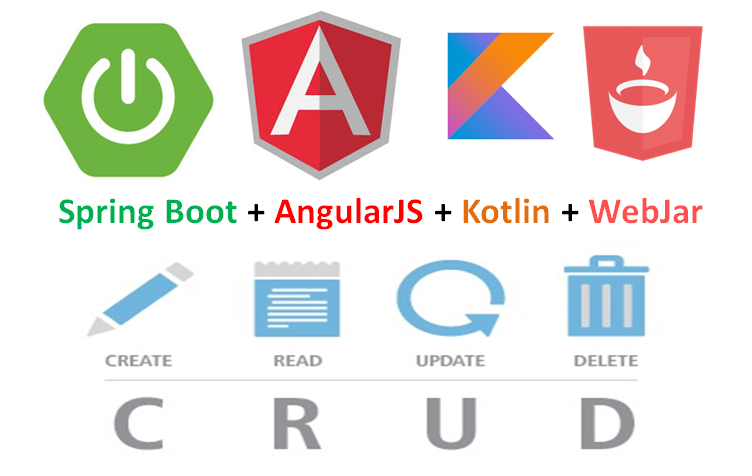If you are an Angular newbie and want to share data between components then this article is for you. Data sharing between components are a very important concept which everyone should know.
In this lesson, I am going to show four different types of data sharing in Angular components.
Parent to Child (by using Input)
It is the most common and straightforward method by using @Input decorator. Let’s see how we can implement this.
parent.component.ts
import { Component } from '@angular/core';
@Component({
selector: 'app-parent',
template: `
<app-child [childMessage]="parentMessage"></app-child>
`,
styleUrls: ['./parent.component.css']
})
export class ParentComponent{
parentMessage = "message from parent"
constructor() { }
}
child.component.ts
import { Component, Input } from '@angular/core';
@Component({
selector: 'app-child',
template: `
Say {{ message }}
`,
styleUrls: ['./child.component.css']
})
export class ChildComponent {
@Input() childMessage: string;
constructor() { }
}
Child to Parent (by using ViewChild)
ViewChild allows one component to be injected into another, giving the parent access to its attributes and functions. A child won’t be available until after the view has been initialized.
This means we need to implement the AfterViewInit lifecycle hook to receive the data from the child.
parent.component.ts
import { Component, ViewChild, AfterViewInit } from '@angular/core';
import { ChildComponent } from "../child/child.component";
@Component({
selector: 'app-parent',
template: `
Message: {{ message }}
<app-child></app-child>
`,
styleUrls: ['./parent.component.css']
})
export class ParentComponent implements AfterViewInit {
@ViewChild(ChildComponent) child;
constructor() { }
message:string;
ngAfterViewInit() {
this.message = this.child.message
}
}
child.component.ts
import { Component} from '@angular/core';
@Component({
selector: 'app-child',
template: `
`,
styleUrls: ['./child.component.css']
})
export class ChildComponent {
message = 'Hola Mundo!';
constructor() { }
}
Child to Parent (by Output and EventEmitter)
Another way to share data is to emit data from the child, which can be listed by the parent. This approach is ideal when you want to share data changes that occur on things like button clicks, form entries, and other user events.
In the parent, we create a function to receive the message and set it equal to the message variable.
[tmh_article_ads]
In the child, we declare a messageEvent variable with the Output decorator and set it equal to a new event emitter. Then we create a function named sendMessage that calls emit on this event with the message we want to send. Lastly, we create a button to trigger this function.
The parent can now subscribe to this messageEvent that’s outputted by the child component, then run the receive message function whenever this event occurs.
parent.component.ts
import { Component } from '@angular/core';
@Component({
selector: 'app-parent',
template: `
Message: {{message}}
<app-child (messageEvent)="receiveMessage($event)"></app-child>
`,
styleUrls: ['./parent.component.css']
})
export class ParentComponent {
constructor() { }
message:string;
receiveMessage($event) {
this.message = $event
}
}
child.component.ts
import { Component, Output, EventEmitter } from '@angular/core';
@Component({
selector: 'app-child',
template: `
<button (click)="sendMessage()">Send Message</button>
`,
styleUrls: ['./child.component.css']
})
export class ChildComponent {
message: string = "Hola Mundo!"
@Output() messageEvent = new EventEmitter<string>();
constructor() { }
sendMessage() {
this.messageEvent.emit(this.message)
}
}
Sibling Components (by using Service)
When passing data between components that lack a direct connection, such as siblings, grandchildren, etc, you should you a shared service. When you have data that should always be in sync.
You can also use a regular RxJS Subject for sharing data via the service, but here’s why I prefer a BehaviorSubject.
- It will always return the current value on subscription – there is no need to call
onnext - It has a
getValue()function to extract the last value as raw data. - It ensures that the component always receives the most recent data.
In the service, we create a private BehaviorSubject that will hold the current value of the message. We define a currentMessage variable to handle this data stream as an observable that will be used by the components. Lastly, we create a function that calls next on the BehaviorSubject to change its value.
[tmh_article_ads]
The parent, child, and sibling components all receive the same treatment. We inject the DataService in the constructor, then subscribe to the currentMessage observable and set its value equal to the message variable.
Now if we create a function in any one of these components that changes the value of the message. when this function is executed the new data it’s automatically broadcast to all other components.
data.service.ts
import { Injectable } from '@angular/core';
import { BehaviorSubject } from 'rxjs';
@Injectable()
export class DataService {
private messageSource = new BehaviorSubject('default message');
currentMessage = this.messageSource.asObservable();
constructor() { }
changeMessage(message: string) {
this.messageSource.next(message)
}
}
parent.component.ts
import { Component, OnInit } from '@angular/core';
import { DataService } from "../data.service";
@Component({
selector: 'app-parent',
template: `
{{message}}
`,
styleUrls: ['./sibling.component.css']
})
export class ParentComponent implements OnInit {
message:string;
constructor(private data: DataService) { }
ngOnInit() {
this.data.currentMessage.subscribe(message => this.message = message)
}
}
sibling.component.ts
import { Component, OnInit } from '@angular/core';
import { DataService } from "../data.service";
@Component({
selector: 'app-sibling',
template: `
{{message}}
<button (click)="newMessage()">New Message</button>
`,
styleUrls: ['./sibling.component.css']
})
export class SiblingComponent implements OnInit {
message:string;
constructor(private data: DataService) { }
ngOnInit() {
this.data.currentMessage.subscribe(message => this.message = message)
}
newMessage() {
this.data.changeMessage("Hello from Sibling")
}
}
That’s it! I hope you like this tutorial and find more useful for you then please share it with your friends.


Share your thoughts